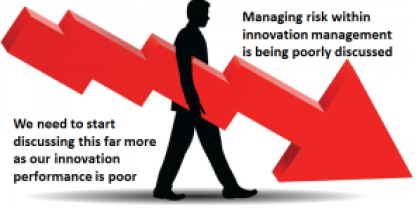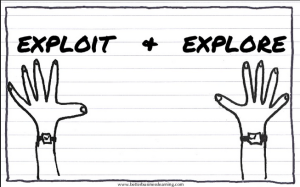 I have been really struggling in the past few weeks.
I have been really struggling in the past few weeks.
Partly a niggling health issue finally got resolved with a ‘delightful’ week in the hospital, a couple of operations later, with a reasonably speedy recovery now thankfully underway.
The plan of course was for me to really use this confinement period as one of those opportunities to catch up on an awful lot of reading around innovation, planning out some areas to focus upon in the coming months and year ahead.
My logic was at the time, well this is similar to a long train journey or flight, you use this time and climb into a number of areas that have been quietly ‘festering’ away in the back of my mind, sitting on my desk or tucked away in my computer.
Continue reading “Risk and Innovation frustrate me”








